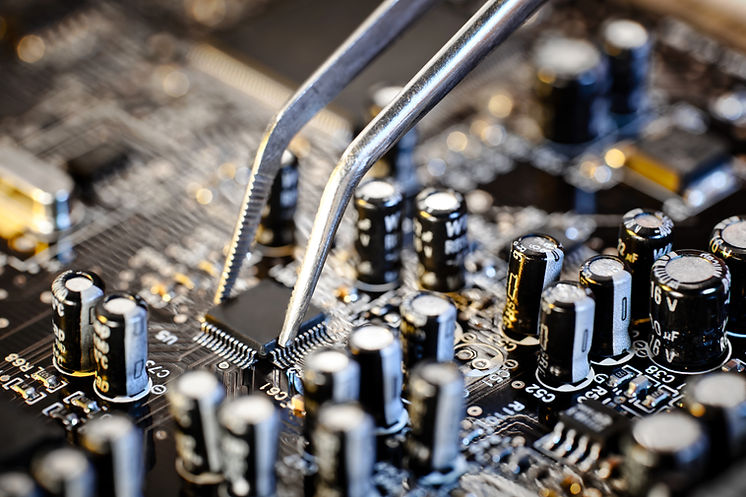Safety Precautions Related to Networks
- Emmanuel and Andrea's Tech Tips

- Dec 3, 2020
- 3 min read
Installing network cables, whether copper or fiber-optic, can be very dangerous. Cables must be pulled through ceilings and walls where there are obstacles or toxic materials. Wear clothing such as long pants, a long-sleeved shirt, sturdy shoes that cover your feet, and gloves to protect you from those toxic materials. Most importantly, wear safety glasses to prevent any eye hazards. Before applying the cables on the ceiling area, you must know and be aware of any dangerous materials or obstacles around the place for extra precaution.
SAFETY PRECAUTIONS WHEN USING A LADDER:
Read the labels on the ladder, and follow any safety instructions written on it.
Never stand on the top rung of the ladder. You could easily lose your balance and fall.
Make sure that people in the area know you will be working there.
Cordon off the area with caution tape or safety cones.
When you are using a ladder that leans up against a wall, follow the instructions written on the ladder, and have someone hold the ladder to help keep it steady.
SAFETY RULES WHEN WORKING WITH CABLES:
The tools required to install copper and fiber-optic cable may cause danger through improper use. When working with cables, strictly follow these safety rules:
Make sure that the tools you are using are in good working condition.
Watch what you are doing, and take your time. Make sure that you do not cut yourself or place anyone in danger.
Always wear safety glasses when cutting, stripping, or splicing cables of any kind. Tiny fragments can injure your eyes.
Wear gloves whenever possible, and dispose any waste properly.
Use common sense when installing cables and fixing network problems. Call for assistance for tasks that you cannot do on your own.
FIBER-OPTIC SAFETY
Fiber-optic cables are useful for communications, but they have certain hazards:
Dangerous chemicals
Tools with sharp edges
Light which you cannot see that can burn your eyes
Glass shards produced by cutting fiber-optic cable that can cause bodily harm
Specific types of tools and chemicals are used when working with fiber-optic cable. These materials must be handled with care.
Chemicals
The solvents and glues used with fiber optics are dangerous that is why it must be handled with extreme care. You must read and follow the instructions carefully. Reading the material safety data sheet (MSDS) that accompanies the chemicals will help you treat someone easier and faster in case of emergency.
Tools
You must avoid getting them on your skin and in your mouth or eyes. Safety must be always our first priority especially when working with a tool. A concession to any safety hazard might result to serious injuries or even death. When working on fiber optic cables we use tools with sharp cutting surfaces for the scribe glass. While, when we fasten connectors to them, we use other tools to pinch it with high pressure. We must avoid getting them on our skin, mouth, and especially our eyes that is why we must wear a proper personal protective equipment when working with cables and its tools.
Glass Shards
The process of cutting and trimming the strands of fiber-optic cables can produce tiny fragments of glass or plastic that can penetrate your eyes or skin and cause severe irritation. The fibers which are extremely small and clear will be difficult to see on your skin. The working surface when working on fiber-optic cabling must be a dark mat for visibility of the tiny glass or plastic fragments. Also, the mat you will use must be resistant to chemical spills.
It is a must to keep your working area neat and clean. Never pick up the tiny fragments of the fiber-optic cable with your hands instead, use tape to properly dispose them off. To store fiber fragments, use disposable containers that have a lid with it.
Harmful Light
You must protect your eyes from the harmful lights produced by some fiber-optic strands. You must take extra precaution because light is a color the naked-eye can’t see, it may harm your eyes before you know it. The light from the fiber may be directly pointed at your eyes when you use a magnifier to inspect fiber-optic cables and connectors. You should disconnect any light source before working with fiber. For extra provision, there are special detectors you can use to tell if a fiber is energized.





Comments